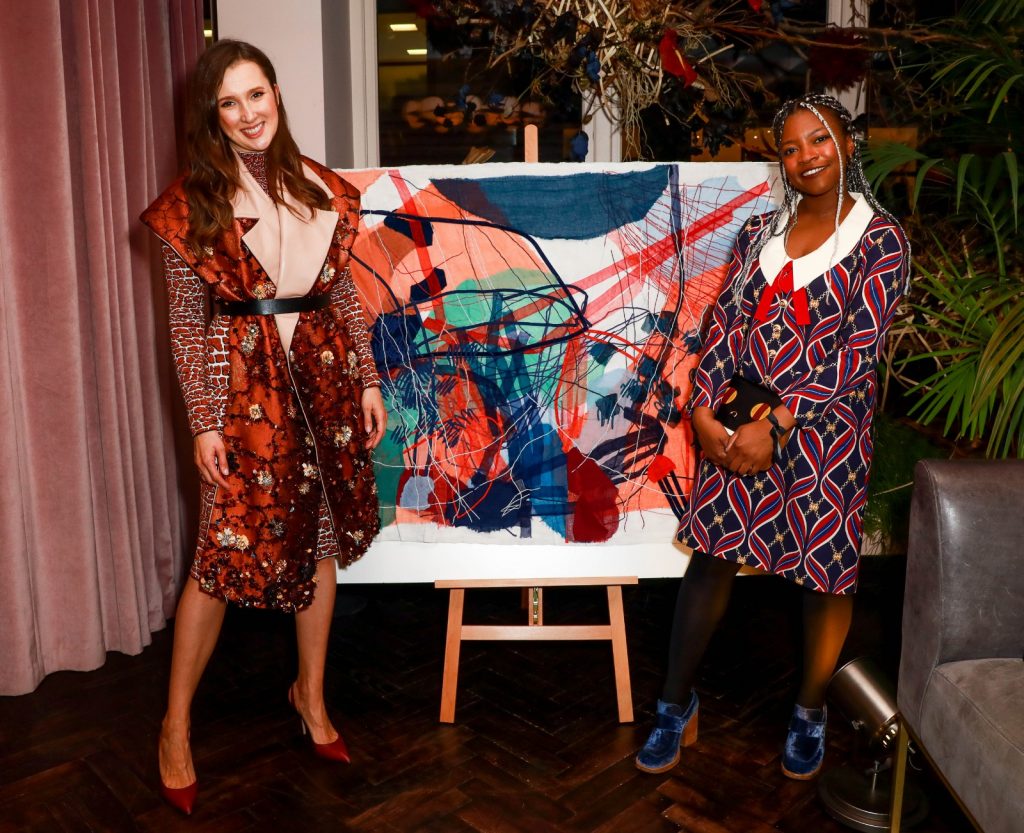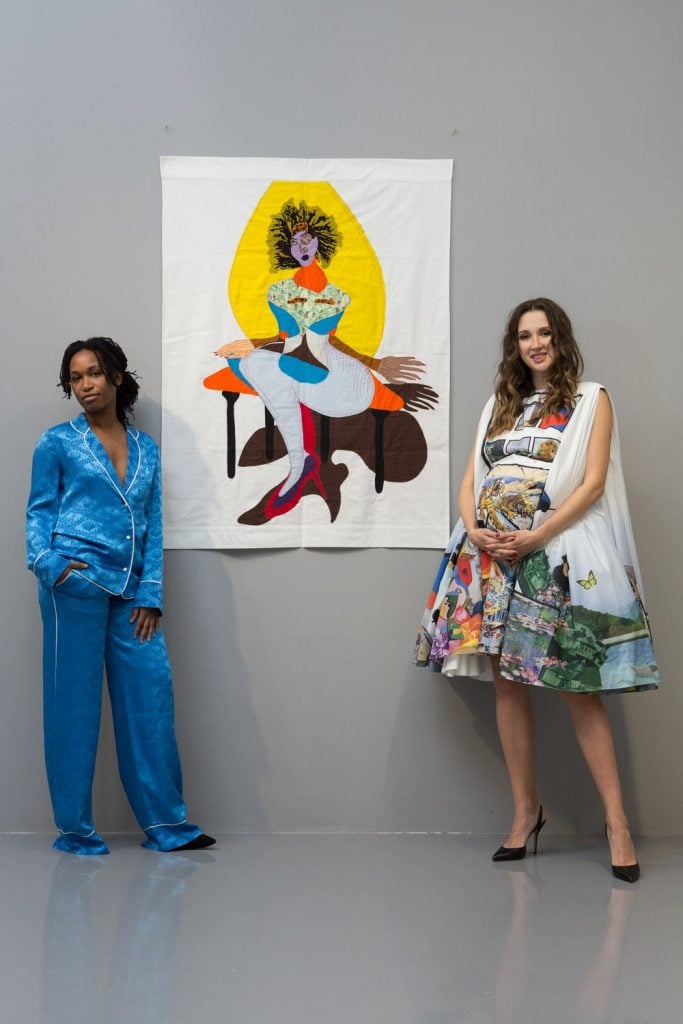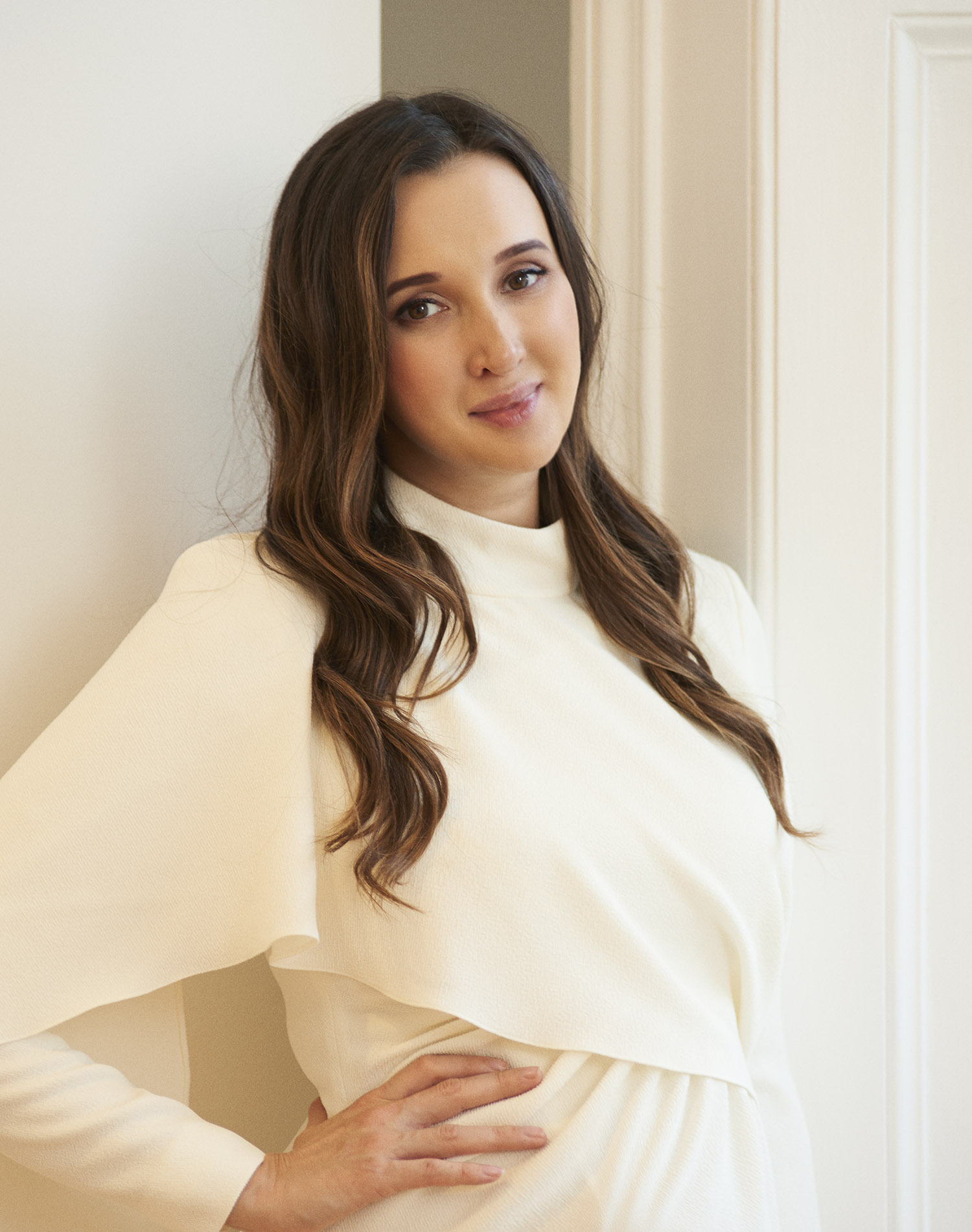[ad_1]
Moscow-born artistic entrepreneur, philanthropist and collector Maria Baibakova wears several hats.
The first non-profit helped transform the former Red October Chocolate Factory in central Moscow into a vibrant space for art and community with a massive exhibition of 70 artists that aimed to attract international attention on contemporary Russian art and artists.
Since then, Baibakov Art Projects has continued to exhibit critically acclaimed exhibitions in cities around the world and has developed into a multi-faceted organization with curatorial, strategic, advisory and philanthropic arms, all of which are in line with Baibakova’s vision.
Baibakova is also adept at advocating for women artists through other groups and organizations. She was one of the founders of the Artemis Council of the New Museum for Women Artists and a member of the executive committee of the Association of Women in the Arts in London. As administrator of her alma mater, Barnard, she founded a scholarship for women studying art history. She is also involved in a number of philanthropic initiatives—Including UN Women UK, for which she designed an initiative to showcase artists who identify women through textile-based commissions.
Artnet News recently spoke with Baibakova to discuss her collection and philanthropy. Read our interview below.
The edition of Marina Perez Simão for UN Women United Kingdom, Untitled (2021). Courtesy of Maria Baibakova.
The edition that I ordered from Marina Peréz Simao for my philanthropic initiative entitled The art of empowerment, which I started supporting UN Women UK four years ago. I am the organization’s senior advisor for the arts and philanthropy. Each year I commission an artist who identifies as a woman to create a limited edition work of art using fabric and stitching or quilting, in reference to the craftsmanship that has historically connected women to through ages and cultures. I pre-purchased the edition before its release on December 8th-a the advantage of being a commissioner, because we are generally full a few hours after the launch!
What works or artists do you hope to add to your collection this year?
I have my eye on a few artists I’m on the waiting lists for, but I don’t want to take it out on them! I focus on artists who identify as women, and there are many talented artists whose works I hope I can acquire to fuel the conversation between the works of art in my collection.
What is the most expensive work of art you own?
My oldest son’s first car doodle when he was a year old… at the cost of countless sleepless nights, I raised a human who can draw a circle! So proud.

Baibakova with the artist Jadé Fadojutimi. Courtesy of Maria Baibakova.
Where do you buy art most often?
In galleries, and the smaller it is, the better. I believe galleries are the key to the art ecosystem. Whenever I land in a new city the first thing I do is get in touch with the local gallery owners– they are often the best gateways to access and understand the local cultural scene. A good gallerist is someone who supports the artist and tirelessly directs their career in the right direction, ensuring that curators and art critics are aware of the work, while educating their collectors.
Is there a work that you regret purchasing?
I’m afraid there are such works, but I think it happens to every collector as they develop their tastes and vision. In fact, I once heard the expression that collecting is a “life of regret”–you regret not buying something when you could, or you regret buying it, even if you are not sure. You regret that you sold something when someone convinced you, even though you didn’t want to part with the job, or you regret that you did not accept that unsolicited offer when it came because you could have parted ways work and buy something else instead.
How do you like to display your works of art?
On the walls, of course! I am from the old school. I haven’t figured out the idea of hanging up a screen that features a rotating collection of NFTs yet, although I’m sure I’ll soon regret my ignorance.
What work have you hung over your sofa? And in your bathroom?
A diptych by Chemu Ng’ok, whose work in the New Museum appeared in a previous triennial. I am a huge fan of the New Museum curators, as I work closely with them on my Artemis Council for Women Artists, which I started at the New Museum with [director] Lisa Phillips in 2015. Margot Norton is good at spotting talent, and I’m still learning from her.
My bathroom features a photograph of Marilyn Minter, who is the force of nature and a powerful advocate for social change. I admire her unwavering commitment to the democratic causes and women’s rights she advocates for. And the soap bubbles in the photo are suitable for the location above the tub!
What’s the least practical piece of art you own?
A video by Diana Thater that I love but can’t read anymore because I don’t have a VCR.

Baibakova and the artist Tschabalala Self. Courtesy of Maria Baibakova.
What work would you have liked to buy when you had the chance?
A portrait of Amy Sherald.
If you could steal a work of art without getting caught, what would it be?
I would fly The smoker, a painting by Natalia Goncharova in the Morozov collection which is currently In sight to the Louis Vuitton Foundation in Paris on loan from the Tretyakov Gallery in Moscow, which is the first museum I visited when I was a Soviet child, and subsequently the first one I worked for during my university studies.
What does art mean to you?
Art for me the ultimate reflection of the life to which it is contemporary. I am a student of art history and what I appreciate most about art is that it can be a bridge to understand a period of time. Although I specialize in curating and collecting contemporary art, that is, art created after WWII, I often reflect on the fact that every artist was “contemporary” in their day. I appreciate the artists for guiding viewers through time in a conversation about what was–and is–important.
What does the style mean to you? How do you define the relationship between art and style, in your opinion?
Style is something that is subjective and personal–it cannot be easily taught or learned (although I would like someone to teach it to me)! I admire those who can connect architecture, art, design, lighting, crafts and fabrics and create immersive environments, but ultimately personal style is something that feels authentic. The art that a collector owns is only one expression of that person’s multifaceted personal history, and the more complex and extensive this visual story becomes, the more works of art benefit from it. The styling might seem effortless, but behind the veneer of “Oh, I just threw this together quickly” lie years of commitment, research, knowledge, and a healthy dose of intuition.
To follow Artnet news on Facebook:
Want to stay ahead of the art world? Subscribe to our newsletter to get the latest news, eye-opening interviews and cutting-edge reviews that keep the conversation going.
[ad_2]
Source link




